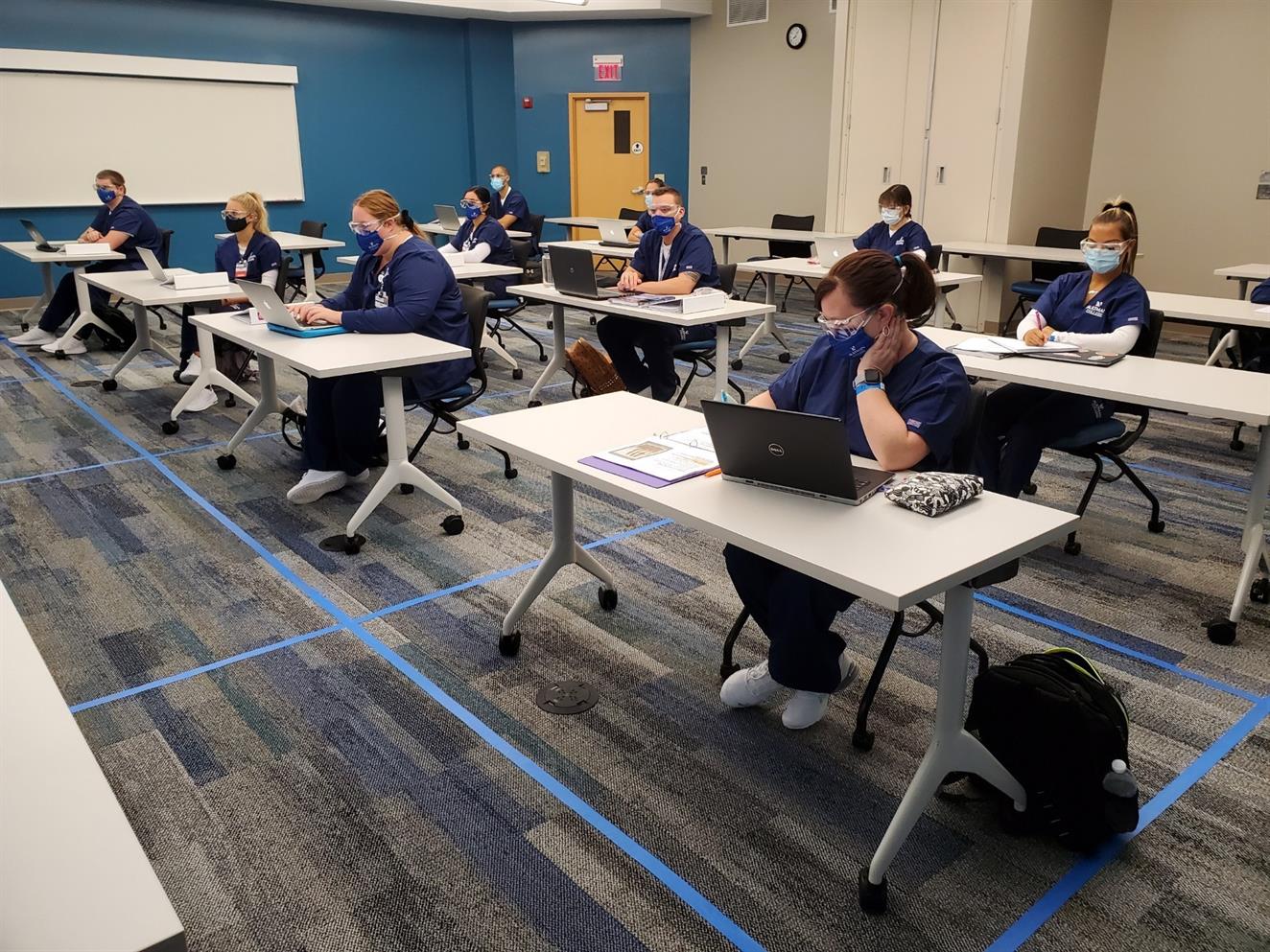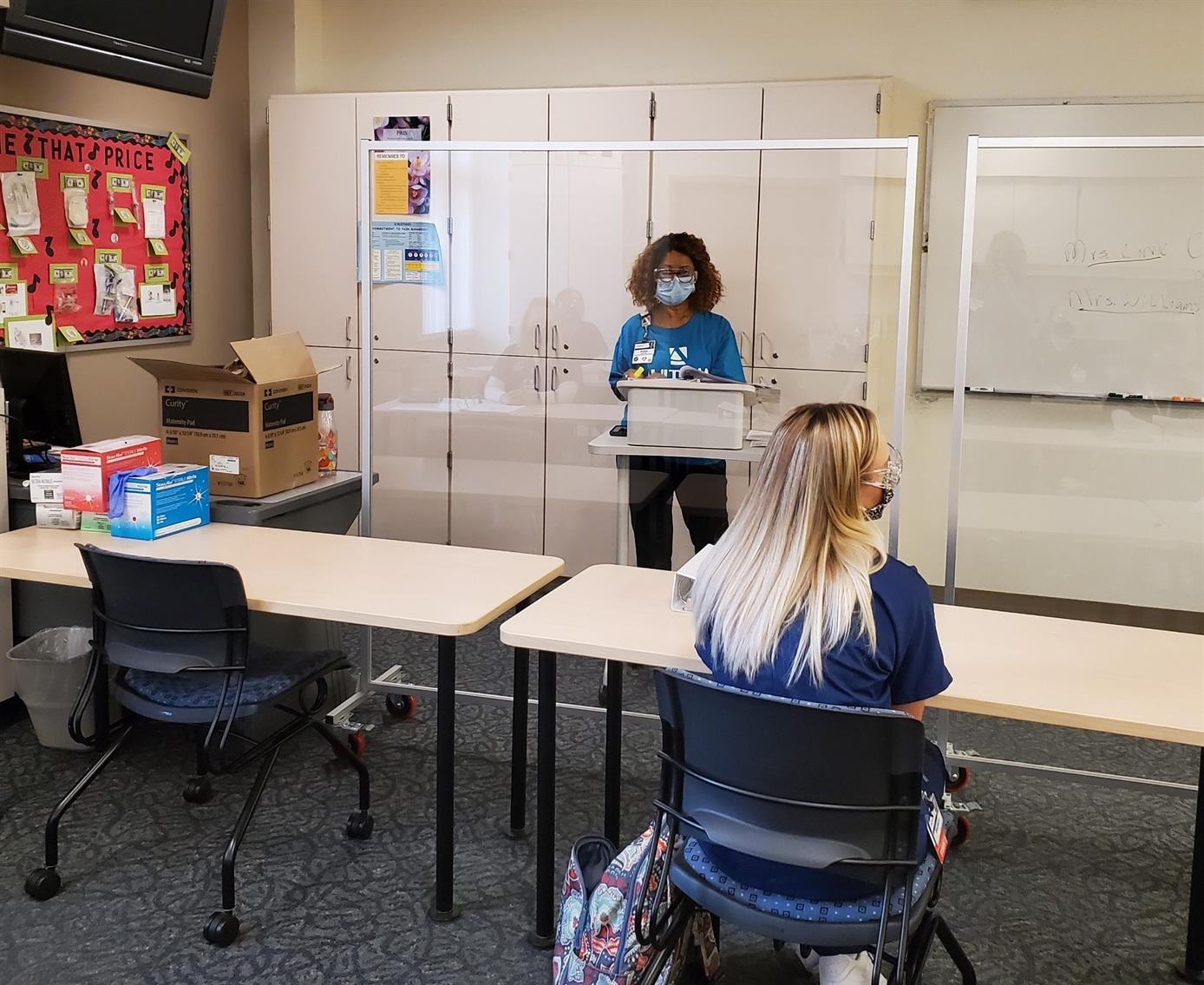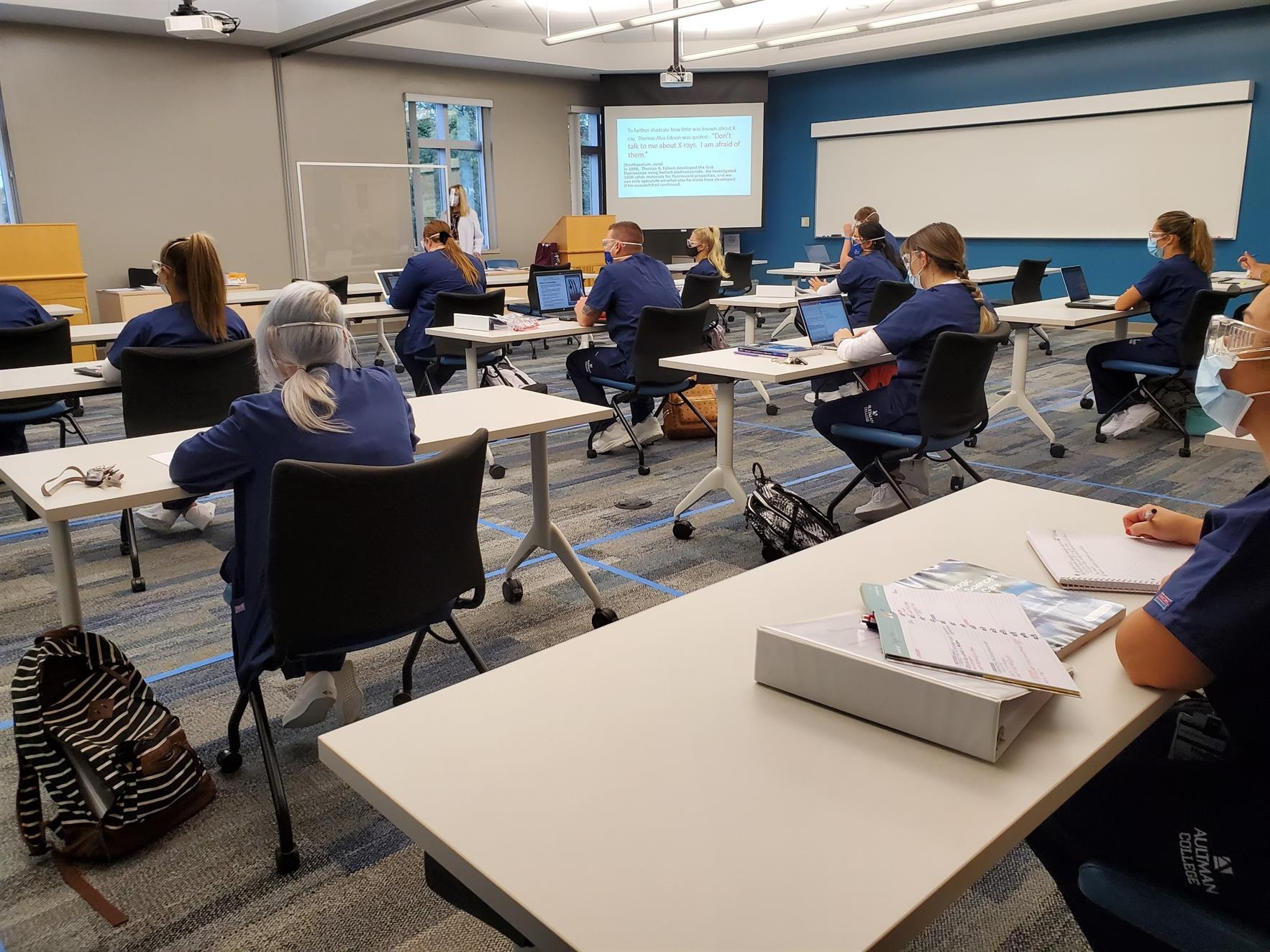
When students apply for nursing school, they know they’re going to be tested. Not just with exams, but with the determination to study for hundreds of hours, the patience and focus to sit through difficult classes, and the bravery to jump in to labs and clinicals. But what nursing students didn’t know this year was that they would be tested to an even greater degree when the coronavirus pandemic hit.
When Aultman College received word from the Ohio governor that we would have to shut down, our professors and staff immediately began to pivot. Labs and clinicals stopped meeting in-person, while all classes transitioned to an online format.
Rushing to Zoom
In the spring, “once word was out about the college closing per governor mandate, we sprang into action,” explained nursing instructor Michelle Grametbauer, MSN, RN, CNE. “We attended faculty Zoom in-services, got our content online, narrated PowerPoints, and adapted lessons to fit virtual settings.”
Many lectures took place over Zoom. Thankfully, the video conferencing service still allowed instructors to interact with students and get to know them better.
“Thank goodness for Zoom!” said Dr. Cherokee Russo, DC, an assistant professor who teaches Anatomy & Physiology. “I consider myself a better teacher during ‘live’ performances where I can interact with the students.” Zoom allowed Dr. Russo and other professors the ability to keep students engaged while learning about critical topics.
Grametbauer considered what kind of teacher she would want to learn from in a virtual format. “I also like to be ‘live’ and inject my lectures with enthusiasm and humor. It makes it a better experience for everyone involved.”
One of the biggest challenges she faced was creating assignments that were fun for students. In a normal schoolyear, Grametbauer would draw a silhouette of a body on the board and label corresponding body systems. Students were given cards with signs and symptoms of hypo- and hyperthyroidism that they would have to match on the body. Since this interactive activity couldn’t be replicated over Zoom, Grametbauer instead held up a symptom listed on a card, and students told her if they thought it was hyper or hypo and what body system it corresponded with.
Exams could also be a challenge, especially early on in virtual learning. Dr. Russo was concerned when they were given short notice to begin working from home—her Anatomy & Physiology II class had an important practical the next week. Instead of giving her students a different test than expected, she spent hours photographing familiar models and diagrams for an online version of the test before she was no longer allowed on campus.
Becoming Tech Savvy
As the pandemic kept creeping through the country, many of our educational partners made resources available to help instructors and nursing students. For example, without the ability to interact with tools and specimens in a lab setting, we turned to a computer program called Visible Body. It allows users to explore interactive 3D models of organs and the rest of the body. And, thanks to CARES Act funding, we’ve been able to purchase the program for many of our students.
Dr. Russo describes the Visible Body program and other resources as “wonderful tools,” and admits there has been a learning curve for instructors in figuring out how everything works and fits into the curriculum. Yet based on her honesty and ability to quickly pivot—skills developed through her nursing background—she’s been able to provide the same high quality of education for students.
“This has been a stressful time for everyone. I reiterate the need to look at the bigger picture. And, I let my students know that I too will make mistakes using this new and new-to-me technology with virtual learning. I asked for their forgiveness in advance and also their help to let me know when something isn’t working.” Dr. Russo went on to explain, “Everyone, everywhere should realize that all humans make mistakes. You’re not a bad person because you made a mistake. It’s how you handle that mistake that could make you a bad person.”
Grametbauer also connected the line between teaching during a pandemic and her nursing background. “As a nurse, you have to be reassuring and compassionate with your patients. With all these changes, you have to be reassuring and provide clear communication to your students. It’s very similar to interacting with a medical patient.”
Safely Returning to Campus
As classes began in the fall semester, students had the opportunity to return to campus. Classrooms were equipped with sanitizing wipes, antiviral sprays, paper towels, and hand sanitizer. Tables and chairs were spaced six feet apart—the safe distances marked by tape on the floor—and class sizes were limited to 15 students.

Students in lab settings are required to wear face masks and were given goggles as added protection. They are assessed for COVID-related symptoms and temperatures are screened before class. In addition to plexiglass being installed in front of the lectern, a large piece of plexiglass on wheels was placed in each classroom so teachers could more safely move around.
During open labs, workbenches went from seating four to two students with a partition between them. Students who want to visit a lab must first sign up online to use available items related to coursework, such as inserting catheters or taking blood pressure. The labs are open a couple of times a week, and capacity is capped at ten students to ensure social distancing.
At Aultman College, we pride ourselves on small classes and the ability of our educators to focus individually on students. With social distancing, we found one-on-one time to be another challenge to get over. Many instructors offer virtual office hours to meet with students. The ability to meet face-to-face—although virtually—has proven to be more beneficial to students and teachers compared to continuous emails back and forth.
Learning Market-Relevant Information
By moving to a blend of virtual classes and in-person labs and clinicals, Grametbauer found herself constantly checking in with students. “I always ask them for feedback on the pace of things. I ask if they’re doing okay. I try to be positive and reassure students that even under the circumstances of 2020, they are still learning what they need to know.”
In fact, they’re getting an incredible amount of real-time learning related to the pandemic. One of our college’s values is providing market-relevant education. So, we asked instructors to add a coronavirus-related activity to all of their classes by relating it to the course’s curriculum.
For Grametbauer’s health assessment class, she created a question-and-answer PowerPoint about the personal protective equipment (PPE) they would wear around potential COVID-19 patients and the types of questions they would ask to screen them for the virus. She also implemented a COVID-related case study in another class. Dr. Russo selected a coronavirus article to which her Anatomy & Physiology I students had to apply the scientific method. This helped them learn the basics of finding trustworthy articles.

Reducing Stress
Throughout every obstacle, our educators have kept in mind how much stress nursing students are under. The journey to become a nurse is stressful as is, but layering on top of that a pandemic creates scenarios no one could have been prepared for.
“The pandemic has reinforced how far kindness and showing love and understanding toward others can go,” said Dr. Russo. As unique issues arose, she deemed solutions “COVID adaptations.” For example, many students had issues with the internet. If they explained the situation, Dr. Russo wouldn’t take off points for an assignment being late. This COVID adaptation relieved some of the stress students were under.
The pandemic hasn’t ended yet. Thankfully, our educators and staff at Aultman College are ready for any challenge and to help nursing students along the way.
Are you ready to start your nursing journey? Learn about our nursing degree programs or request info about Aultman College.

